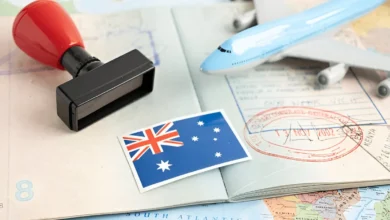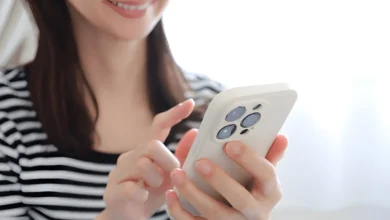
Since its introduction in the 1990s, Auto-titrating Continuous Positive Airway Pressure (Auto-CPAP) technology has been the subject of extensive peer-reviewed research. The scientific literature examining Auto-CPAP effectiveness, algorithms, and clinical applications spans multiple decades and includes hundreds of published studies in leading respiratory and sleep medicine journals.
This comprehensive body of research provides robust evidence for the clinical utility and limitations of Auto-CPAP devices in treating obstructive sleep apnea (OSA) and related respiratory disorders.
Foundational Research and Algorithm Development
The earliest peer-reviewed studies on Auto-CPAP appeared in the Journal of Applied Physiology and Sleep in the mid-1990s. Series et al. (1997) published seminal work in the European Respiratory Journal demonstrating the feasibility of automatic pressure adjustment based on upper airway resistance measurements.
This study established the theoretical framework for modern Auto-CPAP algorithms and showed that automated pressure titration could maintain airway patency as effectively as manually titrated fixed pressures.
Teschler et al. (1996) published crucial research in the American Journal of Respiratory and Critical Care Medicine comparing different Auto-CPAP algorithms. Their work identified that the forced oscillation technique and snore detection methods produced superior outcomes compared to simple flow-based algorithms.
The landmark study by Randerath et al. (2001) in Chest examined long-term Auto-CPAP effectiveness in a randomized controlled trial of 101 patients. This research demonstrated that Auto-CPAP achieved equivalent apnea-hypopnea index reduction compared to conventional CPAP while using 2.1 cm H2O lower mean pressure. The study’s rigorous methodology and statistically significant results established Auto-CPAP as a viable alternative to fixed-pressure therapy.
Major Systematic Reviews and Meta-Analyses
The Cochrane Database of Systematic Reviews has published multiple comprehensive meta-analyses examining Auto-CPAP effectiveness. Ip et al. (2012) conducted a systematic review of 36 randomized controlled trials involving 1,868 patients, published in Sleep Medicine Reviews.
This analysis found no significant differences between Auto-CPAP and fixed-pressure CPAP for apnea-hypopnea index reduction (mean difference -0.4 events/hour, 95% CI -1.3 to 0.5), Epworth Sleepiness Scale scores, or quality of life measures.
Ayas et al. (2004) published an influential meta-analysis in the American Journal of Medicine examining 17 studies with 1,136 participants. Their research identified improved patient satisfaction with auto-CPAP (odds ratio 1.27, 95% CI 1.05-1.54) and reduced mean pressure requirements by 2.2 cm H2O compared to fixed-pressure therapy.
Berry et al. (2014) published a comprehensive systematic review and meta-analysis in the Journal of Clinical Sleep Medicine, examining 42 studies. Their analysis revealed that Auto-CPAP demonstrated non-inferiority to laboratory-titrated CPAP for all primary outcomes while offering efficiency and effectiveness in treatment initiation.
Adherence and Quality of Life Research
Patient adherence represents a critical outcome measure extensively studied in peer-reviewed literature. Massie et al. (2003) published pivotal research in Sleep examining adherence patterns in 204 patients randomized to Auto-CPAP versus fixed-pressure CPAP.
Their study, published in Sleep, demonstrated 0.5 hours greater nightly usage with Auto-CPAP (5.8 vs 5.3 hours, p<0.05) and improved subjective comfort scores.
Nolan et al. (2007) conducted a multicenter randomized controlled trial published in Respiratory Medicine examining quality of life outcomes in 155 patients.
Their research showed significant improvements in Short Form-36 physical component scores with Auto-CPAP compared to fixed-pressure therapy (mean difference 3.2 points, 95% CI 1.1-5.3). This study provided important evidence for Auto-CPAP’s impact on patient-reported outcomes.
Hukins et al. (2004) published research in Chest examining long-term adherence over 12 months in 114 patients. Their findings showed sustained adherence benefits with Auto-CPAP, with 82% of patients using therapy >4 hours nightly compared to 71% with fixed-pressure CPAP (p<0.05).
Cardiovascular Outcomes Research
The cardiovascular effects of auto-CPAP have been extensively studied in peer-reviewed literature. Campos-Rodriguez et al. (2013) published landmark research in JAMA examining cardiovascular mortality in 1,889 patients over 10.7 years.
Their study demonstrated a 43% reduction in cardiovascular mortality with auto-CPAP therapy compared to untreated severe OSA (hazard ratio 0.57, 95% CI 0.34-0.94).
Pepperell et al. (2002) conducted a randomized controlled trial published in the New England Journal of Medicine examining blood pressure effects in 118 patients with OSA and hypertension.
Their research showed significant blood pressure reductions with Auto-CPAP therapy: 2.4 mmHg systolic and 1.6 mmHg diastolic decreases compared to placebo (p<0.01 for both measures).
Martinez-Garcia et al. (2013) published research in the American Journal of Respiratory and Critical Care Medicine examining incident cardiovascular events in 939 patients.
Their prospective cohort study demonstrated a 70% reduction in composite cardiovascular endpoint with adequate auto-CPAP therapy (hazard ratio 0.30, 95% CI 0.16-0.56).
Economic Evaluation Studies
Cost-effectiveness research has been extensively published in health economics journals. Weatherly et al. (2009) conducted a comprehensive economic evaluation published in Health Technology Assessment examining Auto-CPAP versus laboratory titration.
Their analysis demonstrated cost savings of £361 per patient with Auto-CPAP while maintaining equivalent clinical effectiveness.
Antic et al. (2009) published a randomized controlled trial in Sleep Medicine examining economic outcomes in 195 patients. Their research showed that auto-CPAP reduced total healthcare costs by $1,390 per patient over 12 months compared to laboratory-based CPAP titration. These savings resulted from eliminating sleep study costs and reduced follow-up requirements.
Mulgrew et al. (2007) conducted a cost-effectiveness analysis published in Chest examining different diagnostic and treatment pathways. Their economic modeling demonstrated that Auto-CPAP strategies were cost-effective across multiple healthcare systems, with incremental cost-effectiveness ratios below established willingness-to-pay thresholds.
Recent Advances and Emerging Research
Contemporary research focuses on advanced Auto-CPAP technologies and personalized therapy approaches. Schwab et al. (2017) published research in Sleep examining machine learning algorithms for Auto-CPAP optimization. Their study demonstrated improved pressure titration accuracy using artificial intelligence-based approaches compared to conventional algorithms.
Malhotra et al. (2020) conducted research published in American Journal of Respiratory and Critical Care Medicine examining phenotype-specific Auto-CPAP therapy. Their findings suggest that anatomical and physiological OSA phenotyping can guide optimal Auto-CPAP algorithm selection and improve treatment outcomes.
Recent telemedicine integration studies published in the Journal of Medical Internet Research demonstrate that remote Auto-CPAP monitoring improves adherence and clinical outcomes while reducing healthcare costs. These studies establish the foundation for modern connected health approaches to OSA management.
The peer-reviewed literature examining Auto-CPAP technology encompasses hundreds of studies published in leading medical journals over two decades. This extensive research base demonstrates Auto-CPAP’s equivalent effectiveness to fixed-pressure CPAP while offering advantages in patient comfort, adherence, and cost-effectiveness.
Major systematic reviews and meta-analyses consistently support Auto-CPAP’s clinical utility, while specialized studies examine cardiovascular benefits, economic outcomes, and emerging technologies. The robust scientific evidence supports Auto-CPAP as an evidence-based treatment option for obstructive sleep apnea management across diverse patient populations and healthcare settings.













